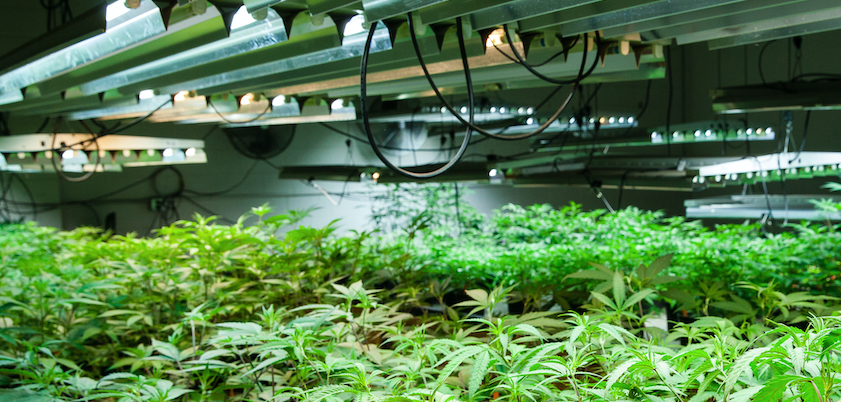11.21.2025
Sausage casings bulletin, November 21, 2025

...

Sustainable cropping practices have been overlooked in the frenetic hemp sector, partly due to the vast numbers of new farmers, but also in the race to bring a crop to market. We commented on this yesterday in regard to indoor production, which has its own set of issues, centering around energy use. Soil and water issues are important to indoor production but are comprised mainly of point source pollution and water use issues, rather than the environmental processes that must be managed for in outdoor production.
Hempseed producers are generally experienced farmers with established crop rotations, like the canola and pulse rotations found in the Northern Plains. These are entirely mechanized operations and use precision agriculture technology to leverage yield data into subsequent planting rates and input applications, which increase both for areas of higher yield potential. This is an excellent example of putting technology to work. Fiber hemp production has yet to establish any norms here in the US, but globally, all hemp rotations are built around other typical crops for that geography.
Fiber hemp production exports significant nutrients from a farm, with as much as 8 tons/acre of material leaving the system. Ideally, a farm closes the loop for nutrients and organic matter as much as possible, but various farming systems have varying potential in achieving that end. Planting fiber hemp on fiber hemp is a good way to mine nutrients from soils and slowly chip away at organic matter levels, though research may reveal otherwise with organic matter. Managing the amount of material that gets incorporated to the field and cover cropping can help mitigate the impacts of growing fiber hemp successively. There is no modern research that looks at the impacts of hemps fibrous root system on soil health.
Cannabinoid hemp also removes significant amounts of material from fields and will also steadily translocate nutrients off the farm. Composting post-extraction material and spreading it on fields, or at the least, discing in the spent material, will help to mitigate the export of precious soil assets. Plasticulture is widely used in hemp production, but the system has its limitations. Excess plastic left in the field is detrimental to soil structure, water and nutrient transport, and overall subsequent crop performance.
Hemp farmers corralled their plastic last year to varying degrees. Many crops were abandoned, and landowner conflicts ensued as they were left with acres of plastic to collect from fields that tenants farmed. Other producers were just too exhausted or overwhelmed once November rolled around, unable to get it done, or lacked funds to hire labor. Remaining producers did it themselves, hired it out, or used creative approaches like the producer in Southern Oregon that hosted a school group that helped to remove it. There are plenty of benefits to plastic mulch also, like increasing yields, suppressing weeds, and protecting soils from leaching.
We’ve also seen exceptional crops of certified organic hemp grown with straw mulch. As producers gain experience with the crop, many will abandon the expense and frustration of laying and removing plastic each year, particularly in areas with moderate weed pressure. Producers have to weigh their own situation, and develop their own management priorities.
Sometimes just seeing the big picture can affect our management approach, like China’s 1.25 million tons of annual plastic mulch waste generated from agriculture a decade ago. Plastic pollution is only becoming more of a problem, and burning it isn’t viable. Recent developments with composting technology, like the enzyme developed to break down plastic bottles will help to reduce plastics in the environment. Plastic mulch alternatives made out of renewable materials like thistle are a good option for plasticulture, but everyone wants to know when hemp-based plastic mulch will hit the market?
Cover cropping is not widely practiced yet in hemp production, save for the winter annuals that may follow a hempseed crop in rotation. Getting a fall crop sown is a priority for anyone on highly erodible ground. Smaller producers can experiment with spinning seed on prior to harvest, others will want some modicum of a prepared seedbed, especially for tiny legume seed. Legumes are plants that “fix” atmospheric nitrogen into plant-available soil nitrogen, with the help of rhizobacteria that grow in nodules on the roots. Plowing down a legume crop prior to planting a moderately heavy feeding crop like hemp can reduce fertilizer costs considerably and can be beneficial to soil life.
There are many cover crop options available to farmers, and local extension personnel can guide farmers to what is successful in their area. Cover crop options range from small grains like wheat, barley, or triticale, to brassicas, like rape or radish, which can also double as a forage crop for pigs. Both hemp and brassica roots have positive impacts on soil structure, and both can improve heavy soils to some extent. Legumes are another option and will generally provide nitrogen for the following crop. Producers should inoculate their seed with the proper rhizobacterium or buy it with an inoculant coating.
The myth that hemp requires essentially no management to thrive has been largely disproved, but some producers continue to operate as though this is the case. In some areas, this delusion isn’t possible, as corn earworm, grasshoppers, and various fungal diseases unleash an assault before grower’s eyes. That myth was propagated by activists, not farmers, and hemp has since proven to be susceptible to a host of issues. Growing hemp year after year in the same location will create an optimal habitat for pests that thrive in hemp, and will guarantee producers a continuous battle with nature.